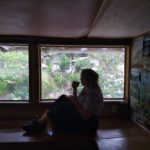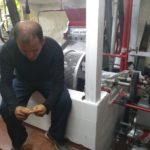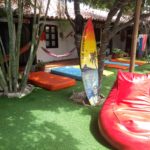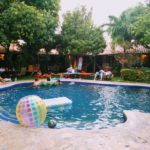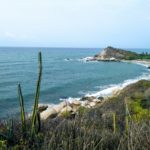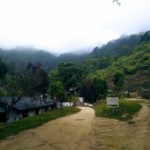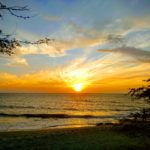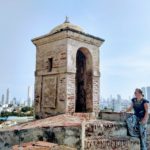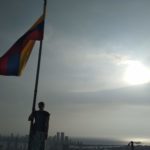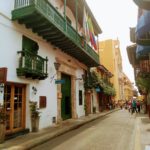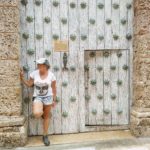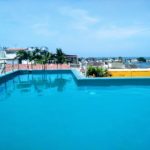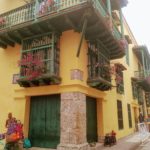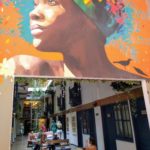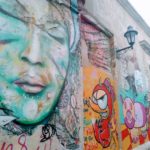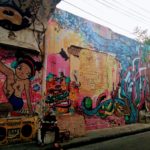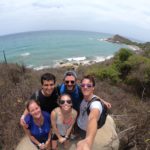Colourful Colonial Cartagena and Seaside Santa Marta
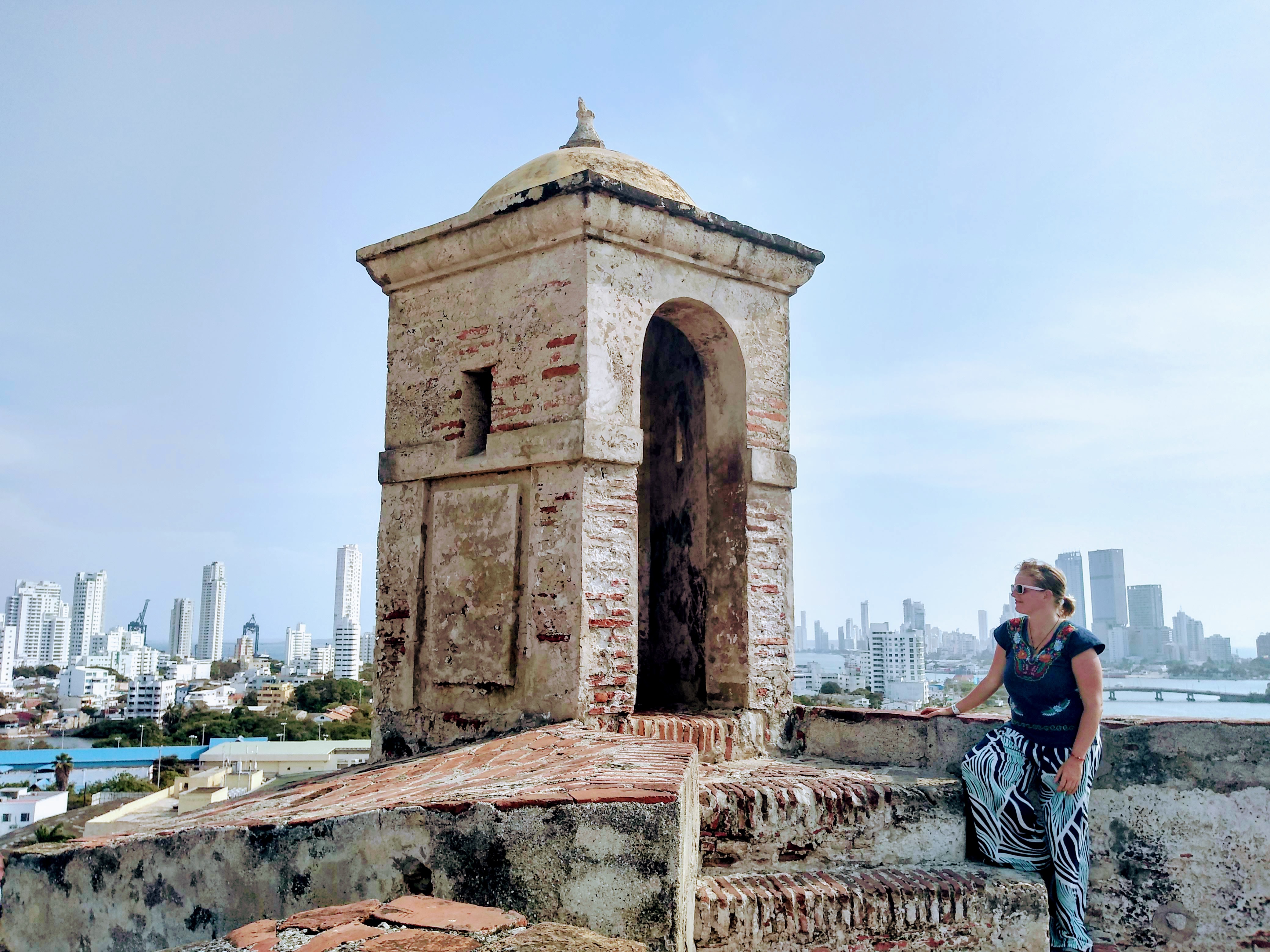
Cartagena is the top tourist destination in Colombia, and perhaps only second in South America to Machu Picchu. Second to Christmas, Easter is the top week for tourists in any tourist destination, so the fact that I had booked for exactly those dates meant that I could add this to my list of awful travel decisions. Here is what I got up to and my travel tips for Cartagena.
Neighbourhoods
The walled city (La Ciudad Amurallada) is the historic centre of Cartagena, with 7 miles of stone walls surrounding the centre.. The construction of the walls to defend the city against pirate attacks lasted two centuries, with construction ending in 1796. It has a tumultuous history, having been conquered by the Spanish, then taken back by the natives, only to be reconquered some time later. British also have taken a slice too, so the architecture of the city is heavily influenced by colonialism. Even the inquisition house still exists, where the Spanish used to interrogate and torture those against the Catholic Church.
Trivia: In this building, there is even a window in which townspeople could slip an anonymous tip of anti-Catholic activities to order an investigation on a neighbour they were not fond of.
The narrow cobbled streets and grandiose doorways to houses with open patios are resemblant of Spanish times. The symbols represented on the doorknockers hinted at whether the family was from the church, royalty, military or others. The number of spikes on the door spoke to the wealth of the family. The two doors of the house opened only for the owner who entered with his carriage, and the smaller cutaway door was entered by house staff. The facades of the houses were painted in bright colours with beautiful balconies adorned with bright purple bougainvilleas.
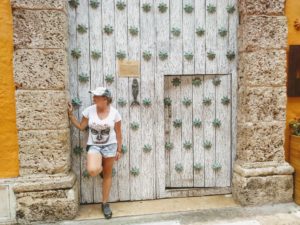
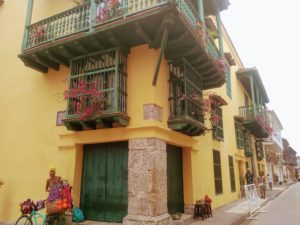
Native women in colourful typical dresses wander the streets selling fruit they carry on their heads.
Tip: They love taking photos with tourists, but pass them a couple of notes for their time, it must be hot to wander around in those dresses in the sun all day!
You can pass by Plaza de los Coches, where horse and carriages can pick you up for a tour around the city of the heat makes you tired.
Getsemaní is a burgeoning hipster area only steps away from the historic walled city. It was once a haven for crime and prostitution but has turned a corner to become quite gentrified and the top choice for young travellers and artists. The streets are full of cafes, restaurants and bars, and it’s absolutely full of amazing colourful street art. Take yourself for a walk through the streets during the day and then nip into a cafe or bar to sip on a cocktail. If you prefer the local scene, head to Plaza de Trinidad, located outside a church and where the locals come to buy a drink from one of the many street vendors and all sit there chatting the night away. It is busy and touristy, and you will definitely be offered drugs if you’re a guy, and “cafe con leche” (white coffee) if you’re a white woman. Yes, I’m serious.
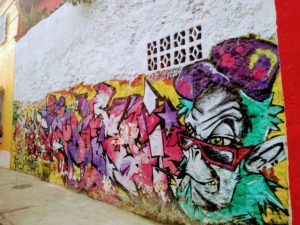
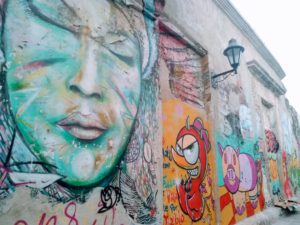
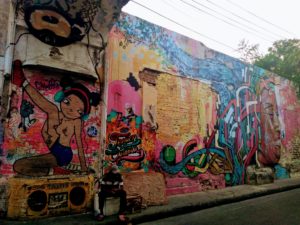
Boca Grande is the high-end neighbourhood, located on the beach and covered with high-rises. I guess you could say it’s the Miami of Cartagena, and if you’re into the high-life, it’s the place for you. Manga is a quiet leafy and more traditional neighbourhood with far fewer tourists for those who need a break from the hustle and bustle.
What to Bring
- In terms of clothing, you won’t need anything but loose fitting shirts and shorts. Leave the jacket and long pants at home. It’s HOT all year round.
- High heels and glamorous dresses are also an unnecessary item. In the Caribbean, the nightlife is far more casual, perhaps unless you are staying in Boca Grande.
- Long but light pyjamas, in case you stay in a hostel with aircon in the rooms – it can get cold at around 3 am.
- Sunscreen, hat and sunnies, shirts or dresses with sleeves to protect your poor shoulders from the searing daytime sun.
- A good facial cleanser – you’ll sweat a lot and don’t want a heat rash.
- Imodium. Every gets gastric problems in Colombia at some point or another.
- Mosquito repellent for the nights.
- A bottle of water – EVERYWHERE. Not just to prevent dehydration, but to carry very obviously in public to avoid being swarmed by street vendors.
- Earplugs or noise-cancelling headphones
- A mask (for when people turn on the lights whilst you’re sleeping)
Where to Stay
I had done my research about well-reviewed hostels in Cartagena and decided on one called Media Luna. It was apparently one of the best social hostels in Gethsemaní, and being a solo traveller, I decided a party hostel was what I needed to make friends. In a hot city such as Cartagena, a pool is also a must.
Although the hostel is located in a top spot close to all the action, it did not live up to its reviews. The doors and windows to the room did not fully close, so the loud music and talking filtered through until the early morning. There was only one powerpoint in the rooms and I had to take my phone to reception every morning to be charged before going out for the day.
The dorms are in 4 buildings surrounding the pool and common area, making the place like an oven with no breeze during the day. The tables were scattered throughout the common area with groups of people dispersed throughout the area, sitting on their phones, without any activities to bring them together. The only cool area with a powerpoint to work or spend time on the internet was the enclosed TV room hidden in a back corner with no windows, and the wifi signal didn’t reach anyway. The DJ in the common area plays a loud repetitive reggaeton playlist every day until 11 pm and on Wednesday night their rooftop nightclub opens, and the music thumped through the walls until 4 am.
I had one more night to find accommodation before heading to Santa Marta and I had no hesitation in changing to Selina Cartagena for my final night, having already experienced the luxury of the brand in their Playa del Carmen hostel. Two buildings, both with rooftop terrace bars with pools overlooking the ocean. A yoga deck, amazing chillout music and super friendly staff made me feel like part of the Selina family. I ended my final morning in Cartagena with a morning swim in their pool overlooking the harbour and the beautiful colour of the city buildings below whilst chatting with the amazing bartender Daniela about work, life and love. As a traveller/marketer who is now also working with clients involved in the hotel industry, I can say that these guys do everything right. I didn’t even do any research for my trip to Medellin, I just contacted them directly and was awarded a 10% discount for having stayed in their location in another city within Colombia.
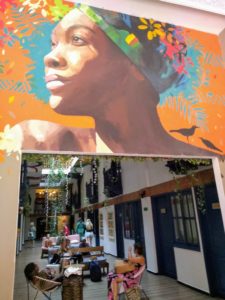
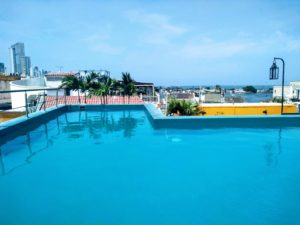
What to look for in a hostel
- Aircon in the bedrooms (a must!)
- A pool to cool off during the day (makes a huge difference)
- A covered shaded place to chill out
- Powerpoints (and lights if possible) in your bunk
- If you’re travelling alone, tours or nighttime activities to help you meet other people to find company for your daytime activities
- A room that doesn’t share a wall or ceiling with a nightclub
- Inside or outside the walled city is not a concern, most are walking distance away and taxis are cheap
What to Do
- Take a free walking tour of the walled city. They meet in the main park near the entrance and have umbrellas to identify them. You should tip at the end, but you get a lot of historical information and good context on the city’s roots. Wear a hat and try to listen to their stories from a shady spot, it’s hot out there! It’s a good place to meet other tourists, and I ended up at a beach later that day with a New York Journalist and two young interns, who a local woman affectionately and hilariously named Two Bags of Milk for their precious white Dutch and British skin. They will be forever known as such in my heart.
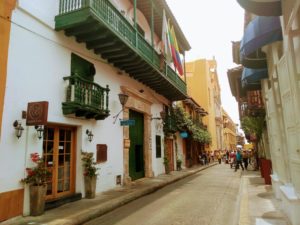
- Take a walk up to el Castillo de San Felipe. Walking distance from the centre, the Castillo is not really a castle, but more of a fortress built high on a hill to notice enemies approaching the bay. I’d suggest booking a tour or asking one of the guides who hang around there (try to go with a group or team up with other travellers who you find at the gates to cut costs), otherwise you find yourself wandering around with the only thing to do is take photos.
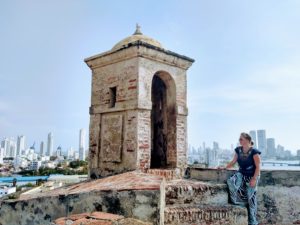
- For the highest 360 degree view of Cartagena, head to El Convento de la Popa (The Convent of the Stern, weird name I know). It has a lot of documents and maps from early Colombia and a lovely sunset if it’s not too overcast. Take a taxi up the hill instead of walking, because the surrounding neighbourhood is a less pleasant one. A taxi will take you there, wait for you as long as you need and return you for about $40,000 COP ($12USD). Expect to pay an entry of about $4.
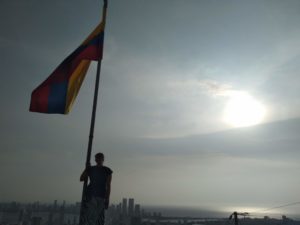
- Catch the best sunset with a drink at Cafe del Mar inside the walled city.
- For you salsa dance lovers, head to the Havana Club in Gethsemaní or Don Felipe in the walled city. I was so disappointed to not be able to go, it was so full the people were spilling out of the door during Easter week, and even though Colombians say “Así rumbeamos” (that’s how we party), I decided that it wasn’t worth the $10 cover charge to be stuck in a claustrophobic club with overpriced drinks not able to move for three hours.
- Embrace the hot Caribbean sun and head to the beach to work on that tan, but don’t stay inside Cartagena’s central district. The beaches of Boca Grande and surrounds are very underwhelming, with brown-grey sand and dark water with a view out to big oil ships. Take a day trip out to Playa Blanca, but beware, it will be super crowded with tourists and you will be hounded every 20 seconds by locals trying to sell you drinks on the beach. The good thing is that you can drink on the beach (unlike in Australia), so bargain them down in price, grab a couple of beers, sit back and enjoy your day.
Overall Impressions of Cartagena
It’s a charmingly colourful city with a lot of history. It is full of tourists in the busy season but not as many as Europe, and the city wouldn’t have undergone so many restoration projects if it weren’t for the income brought in by tourism. It’s hot and after the beaches of San Andres, not the ideal beach destination for me, neither was it the authentic Colombia experience I was searching for, and I often wandered the streets alone wondering when I could move on. Many people say Cartagena is the best holiday destination in Colombia, I suppose I just arrived in a bad week and would have had more fun with some company.
Santa Marta
Up the coast several hours’ bus ride from Cartagena is the other touristic area of the state of Bolivar – the seaside town of Santa Marta. It’s a popular destination for beach and scuba diving lovers, but since I had been already to the best diving destination in Colombia, San Andres, I decided to skip the beach and explore the other greener natural wonders.
Dreaming of a Wonderful Hostel
Upon recommendations from various blogs and a strong confirmation from another hostel guest in Cartagena, I booked into The Dreamer Hostel, and I was not disappointed. Located 15 minutes cab ride out of the town centre where the bus from Cartagena left us, I arrived in the evening and was greeted by the friendly guests sharing the common area, which was fully equipped with a pool/ping pong table, a restaurant with well-priced and decent enough meals, a bar with cocktail happy hours and a beautiful lagoon pool with toys and even an inflatable beer-pong game. The pool was surrounded by lush gardens, plenty of sunbeds, beanbags and hammocks to laze the day away reading. I met a couple of girls reading books like Love in the Time of Cholera to put their travels in South America in context. Upstairs from the bar was a very homey kitchen, massive dining table, a very comfy lounge room where there were always people watching movies (or, to my delight, Friends!). I am so thrilled to be able to keep in touch with the Game of Thrones final season whilst I travel!
For the digital nomads, there is a library with plush seating, a desk to work and two computers with fantastic wifi. The common areas are close together and activities such as trivia, beer pong and table tennis brought everyone together in a laid-back, very international atmosphere, with people from Canada, the US, Australia, the Netherlands and the UK. However the music and lights were switched off strictly at midnight, and all remaining chattering friends were forced to the reception or across the road to the park to continue talking. This was fantastic in the sense that a good night’s sleep is guaranteed, but was rather inconvenient when the lights were switched off in the middle of a very tense long-running card game.
The hostel has a way of capturing their guests and keeping them, with at least 4 of the staff I met only temporary volunteers in the bar to extend their stay there. I received big friendly hugs when leaving, and I really felt at home in this hostel. Although it was a good 30 minutes in the bus to the town, it was closer to the natural wonders that people come to see in the region.
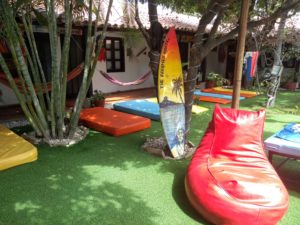
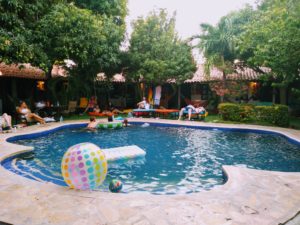
Coffee and Cascadas in the Sierra Nevada
The morning after my arrival, I headed to the hilly coffee town of Minca located in the Sierra Nevada hills, which was a cool relief from the humid heat of Santa Marta. I joined a tour with an Argentinian couple and a Brazilian tour guide who was learning the ropes. After a half hour slowly uphill from the hostel, we arrived in a sleepy town of Minca, which has only been opened in recent years from years of protection by locals from tourism. Travellers with an extra day or two go to stay in one of the few eco-hostels in the hills to soak up the views and the coffee. We drove through the main part of town and continued bumping uphill along a dusty narrow dirt track for another 40 minutes until we reached the Victoria Coffee Plantation. I joined a Spanish tour that led us through and explained the entire process from fertilizing and harvesting the plants, to extracting the seeds, washing them, drying them and roasting them, all through a hydro-machinery process that ensures nothing is corrupted through methane or the hand of Man. I learnt so much on this tour, such as the difference between Italian and French roasting, what types of coffee grows where and why.
Fun fact: Colombia is the third-biggest coffee producer in the world after Brazil and now has also surprisingly been taken over by Vietnam. However, the majority of their coffee is exported, with the country’s citizens mostly drinking the second-grade beans that had been infected with parasites before being cleaned.
Sipping my free coffee overlooking the Sierra Nevada after this tour was a highlight of my day.
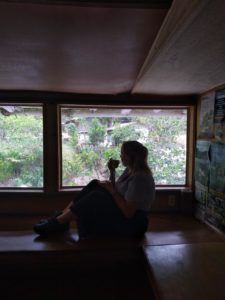
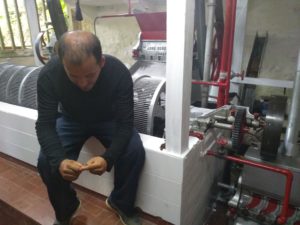
We then headed back down the mountain to a swimming hole, where we hiked for a while to reach an area untouched by tourists and visiting locals. The water was cool but refreshing after the hike but made for a very slippery hike back down the other side (especially after accepting a puff of joint from a local standing casually on the rocks over the rapids on the way back and then after discovering just how strong the MJ is in Colombia, making my way back to the entrance over the rocks with no shoes). I was mortified and a little impressed to see people making the very narrow rocky trek with motorbike helmets and pure white pants. Good luck to them. After a tasty italian lunch in town, the day came to $95,000COP ($30USD).
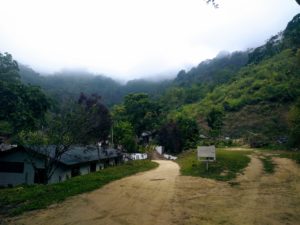
Parque Tayrona
The next day I headed to Tayrona National Park with two Dutch pilots, an Australian guy from Melbourne and a girl from the USA that I had met and started an epic card tournament with the night before in the hostel. The walk was mostly using constructed wooden path and despite being a 2-hour mission, the level of difficulty was not high and the conversation made it light work. For solo travellers, I definitely suggest meeting up with people in your hostel and forming a group to have company for the day or even camp overnight in one of the tents or hammocks. I attempted to strike up a conversation with one of the locals selling fruit, but he took very little interest in providing more than one-word responses, rolling his eyes with a look that showed how happy he was to converse with tourists. This sentiment was reflected further when we heard that the town within the park where some of the local indigenous tribes still live had been closed off due to disinterest in interacting with tourists. Whilst I respect this decision as I hate my kind as much as anyone, I also find it sadly ironic that they choose not to let in the people who want to show an interest in their culture.
We were rewarded with some lovely sights of the beach at the end of the hike, however, John the Australian and I both admitted we had been spoilt for national parks and white beach with fine soft sand in Australia having never paid an entry fee of $25 to enter. However, it is one of the biggest tourist spots in the Santa Marta region and one that is said to not be skipped if you happen to find yourself there. We skipped the large swimming spot called La Piscina (the swimming pool) and found or own private Piscinita, where floated in the salty ocean, rock-jumped into the cool shallow waters and practised our salsa dancing on the beach, thanks to the foresight of one of the Dutchmen to bring his portable speaker and much to the amusement of other hikers walking past the beach.
Tip: Don’t attempt to bring in any alcohol. The police hang around and check your bags. If it weren’t for my level of Spanish and baby-blues, John wouldn’t have even been able to keep his souvenir bottle of Mezcal from Mexico.
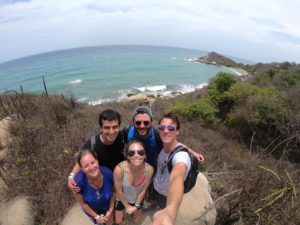
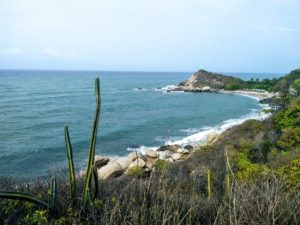
There’s a lot to be said about doing nothing at all
The next day, the group dispersed and John headed off on a track of La Ciudad Perdida (The Lost City), which for only $300 and no 5-month waiting list, is quickly becoming the new traveller’s alternative to Peru’s Inca Trail to Machu Picchu. If I hadn’t already booked my flight to Medellin, I would have stayed on another two days and headed with the others to the beachside town of Palomino. I decided to take the day to catch up on housekeeping: budgeting, a bit of client work, writing and reading. I envied those girls reading by the pool and resting in their hammocks, so I took my final day to recharge ready for my next destination. I have found that taking that extra day to recover your energy and get your affairs in order so you don’t stress about money, work or how many clean clothes you have has become necessary for me in order to feel ready to move on and take on the rest of my voyage.
Plaza de los Novios
After a day without so much as leaving the hostel, I decided to head into town for the first time with an Argentinian girl from my room. We took the local bus and walked along the beachfront, only to be approached every minute by locals and Venezuelans trying to talk to us and sell us things. I have learnt the extremely polite way of turning down street vendors in Spanish, by saying “Gracias, muy amable”, which means “Thanks, very kind.” However, one particularly insistent chap decided to follow us and ask again. I then responded with “What my friend and I would really like, if you’d be so kind, is to have our girls night, thank you.”
This didn’t deter him in the slightest, so I had to step up the level, telling him to leave us in peace. He mumbled something about me having a bad education (which in Spanish means bad manners), to which, I saw red and responded with “No, what IS bad education is continuing to follow to women on the street after they have repeatedly told you to leave them alone!”
We escaped from the beachside esplanade however this pattern continued once we took our seats in a restaurant bar in the Parque de Los Novios, the Zona Rosa (the bars district) of the town. Every 30 seconds we were interrupted by Venezuelans asking for money. After seeing so many immigrants who had crossed the border into Bolivar, I took pity on their plight and gave them a few coins when I had the change, but the sheer amount was overwhelming, and I could easily spend $100 giving only chump change to each one that passed us. We had no choice but to move inside when I was then forced into the role of translator between 3 Colombian women and an extremely coked-out middle-aged man from the US, who seemed to have only just discovered cocaine and was about to talk his tongue right off.
When 10-hour buses are a better idea
Flights domestically around Colombia are extremely cheap, and you can often grab a flight for only $30-$40. I made some big mistakes here. On the first flight I didn’t print my boarding pass so got a $15 charge at the check-in counter, then this time I forgot to add my baggage so paid an extra $30. Finally, for today’s flight, I thought I’d learnt all my lessons. I packed well, pre-printed my boarding pass at the hostel and turned up with plenty of time to spare. I settled down near the screens to sip a coffee and wait for them to change to “boarding”.
They didn’t change. I didn’t hear the call for the flight and even though I was sitting right next to the gate, I was too engrossed in my coffee and my phone to see anyone walking towards the gate. I missed the flight by no more than 2 minutes. I had to recollect my bag, pay an extra $50 to book the next available flight, which was not for another 8 hours, and sweet-talk the airport police to do me a favour and print my new boarding pass so they wouldn’t take any more of my money. I then have had to carry my bag around the airport for another 3 hours until it was time to re-check it in. Luckily, Santa Marta has an airport that literally sits on the side of a beautiful quiet beach, with wide windows overlooking the Caribbean. There’s no better way to spend a long wait for a flight when you’re incensed at your own stupidity for missing yet another of too many flights. However, this situation, like so many others on this trip, is another test of how I’m going to react. I could go to the gate and sit sulking until my flight is called, or I can take my backpack outside to the beach and take this as a sign that Santa Marta wanted to keep me for a few more moments to watch one final sunset.
Now as I sit in a cabana on the beach at the side of the airport wrapping up my time here in Santa Marta, I feel the warm afternoon sun and wind on my back as I type. The waves lap the shore only metres away and I listen to the pilots on their afternoon break playing dominos, slapping the tiles down loudly and triumphantly. Although I could have stayed a lot longer in the north, relaxed a little more and evened out that tan, I’m ready to move on. I’ve had enough beach and heat for now, and I have another 16 days to explore the rest of the country.
If I eventually get out of here.
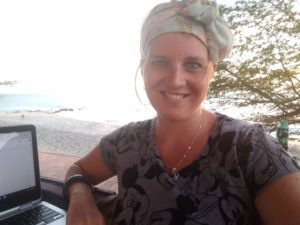
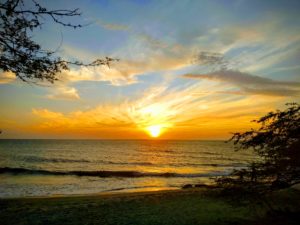
Support my blog: subscribe via email
It takes a long time to plan, write and design my blogs. I love writing, and this is something I do totally for free for the love of sharing with people about my life and adventures, for those who don’t have the opportunity to do it for themselves.
So if you enjoy my writing, I ask you to please subscribe to my blog using the form on the side of this article. Also, leave a comment below with your thoughts on the article, or what you would like me to write about.

